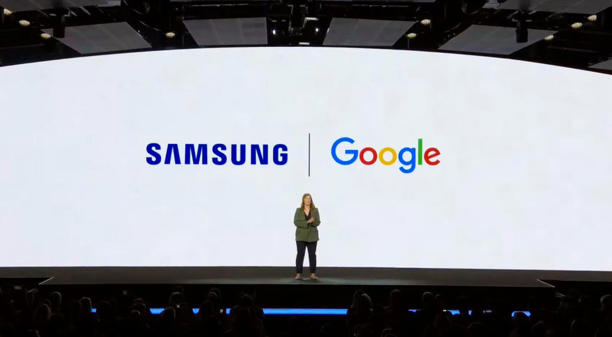Samsung, Google, and Qualcomm are joining forces for a groundbreaking mixed reality project that could rival Apple’s Vision Pro and Meta’s Ray-Ban smart glasses. While details are still scarce, here’s what we can gather about this ambitious collaboration and what it means for the future of mixed reality.
The Mystery Behind the Mixed Reality Collaboration
The collaboration between Samsung, Google, and Qualcomm has sparked excitement in the tech community. Yet, specifics about the product remain elusive. Here’s a rundown of what we know so far:
-
Confirming the Partnership: The companies have publicly confirmed their partnership, but beyond that, details are thin. Google’s Rick Osterloh hinted at the initiative during Samsung’s Unpacked event in Paris, suggesting that the project aims to bring “next-generation experiences” to various devices, including a new XR platform.
-
Current Status: While precise product information is not available, we know that Qualcomm’s Snapdragon XR2 Plus Gen 2 chip will power the device. This chip, an upgrade from the one used in Meta’s Quest 3 headset, indicates that the device could be a VR-like headset rather than a pair of glasses.
What We Can Infer About the Project
1. The Platform’s Vision
The goal of the Samsung, Google, and Qualcomm collaboration appears to be the creation of an open mixed reality platform. This platform aims to be as transformative for mixed reality as Android was for smartphones. TM Roh, President of Samsung’s Mobile Experience Business, mentioned that the project would involve “many third parties,” suggesting a broad ecosystem rather than a single product.
2. Potential Use Cases
Based on statements from Samsung executives, the mixed reality device may focus on:
-
Productivity: Enhancing experiences like teleconferencing and offering larger virtual screens. This aligns with Apple’s Vision Pro, which aims to integrate mixed reality into everyday tasks.
-
Integration with Smartphones: Initially, the device might rely on smartphones for some features. Roh hinted that short-term experiences could involve a connection with mobile devices, but in the long run, mixed reality could evolve into a standalone experience.
3. The Role of Artificial Intelligence
AI is a significant theme for Samsung in 2024, and it’s likely to play a crucial role in this project. AI could enhance the device’s capabilities by improving multimodal interactions—combining text, speech, and image recognition. This approach could lead to a more intuitive and immersive experience.
Comparison with Existing and Upcoming Technologies
Apple Vision Pro vs. Samsung/Google/Qualcomm Project
-
Apple Vision Pro: Apple’s mixed reality headset focuses on blending virtual and real worlds, with high-end features and integration into Apple’s ecosystem. However, it’s currently limited to working with Macs.
-
Samsung/Google/Qualcomm Device: The upcoming device is expected to compete by offering a broader compatibility range. Samsung’s experience with high-quality displays and cameras, combined with Google’s extensive software infrastructure, could provide a robust alternative.
Meta’s Ray-Ban Smart Glasses
- Meta’s Approach: Meta’s Ray-Ban glasses are equipped with cameras and microphones, aiming for a lightweight, everyday wearable. While not as immersive as VR headsets, they offer a glimpse into integrating smart technology into familiar accessories.
Expectations and Speculations
1. Potential Product Features
-
Visual and Sensor Technology: With Samsung’s expertise in displays and Qualcomm’s XR2 Plus Gen 2 chip, the device is expected to feature high-resolution displays and advanced sensors for motion and eye-tracking.
-
AI Integration: Google’s AI capabilities could lead to a device that understands and interacts with its environment in sophisticated ways. This includes potential smart glasses that integrate AI for enhanced functionality.
2. Compatibility and Ecosystem
- Samsung and Google’s Edge: Both companies have extensive hardware and software ecosystems. We might see a device that integrates seamlessly with Samsung phones, tablets, and Google’s Android services. This could provide a more versatile and interconnected user experience compared to Apple’s current offering.
3. Pricing and Availability
-
Cost: Given the advanced technology and the involvement of major tech players, the device may come with a price tag closer to Apple’s Vision Pro than to more affordable options like Meta’s Quest 3.
-
Release Timeline: As of now, there’s no official release date. The device’s launch will likely depend on the progress of development and integration of various technologies.
Conclusion: Anticipating the Future
The collaboration between Samsung, Google, and Qualcomm represents a significant step forward in mixed reality technology. While we await further details, it’s clear that this project aims to challenge the current leaders in the field by offering a versatile, high-performance mixed reality platform.
Stay tuned for updates as these tech giants reveal more about their ambitious project. For now, we can look forward to a future where mixed reality devices become an integral part of our digital lives.
Further Reading:
- Mixed Reality Technology Overview: Mixed Reality Explained
- Snapdragon XR2 Plus Gen 2 Features: Snapdragon XR2 Plus Details
- Samsung and Google Collaboration Insights: Samsung Google Partnership
- AI in Mixed Reality: AI and Mixed Reality
- Apple Vision Pro Review: Apple Vision Pro Review



